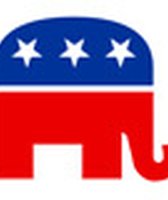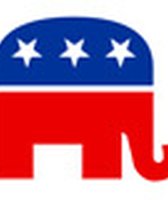Stand up for the facts!
Our only agenda is to publish the truth so you can be an informed participant in democracy.
We need your help.
I would like to contribute
John Kasich's tax cut largest in the nation? Depends
The Ohio primary is a do-or-die moment for presidential hopeful John Kasich, which means it’s time for lots of new political ads. In this one, folksy music plays under a voiceover reminiscent of a Jeep commercial.
"Twenty million Americans are out of work. That’s unacceptable. But John Kasich won’t stop until that number is zero. As governor, Kasich delivered the largest tax cut in the nation, and over 400,000 new jobs have been created through his leadership. As president, Kasich will cut taxes, freeze new regulations and reshore American jobs. So punch the clock. Take that to the bank. America, let’s go to work."
Ohio is among the states that come up in discussions about big tax cuts. But was Kasich’s truly the largest in the nation?
"There are at least half a dozen reasons why there has to be an asterisk after that sentence," said Carl Davis, research director at the Institute on Taxation and Economic Policy, a left-leaning think tank.
"The ones that come to mind are Kansas and Ohio, and to a lesser extent, North Carolina, Texas, maybe even Florida," said Davis. "But it’s complicated, because tax changes are often enacted in stages, and in some cases are accompanied by tax hikes, like on cigarettes in Kansas and Ohio. Trying to gauge what the revenue of a state would have been without the tax cuts is really difficult."
Sign up for PolitiFact texts
Kasich’s spokesman, Rob Nichols, provided us with a table showing a summary of the governor’s net tax reductions from 2012 through 2017. It shows the net total reductions as $4.9 billion, which the campaign rounds up to $5 billion.
Yet Kansas, not Ohio, consistently rises to the top of searches for "largest tax cut." A fellow with the Show-Me Institute, Andrew Wilson, called Kansas Gov. Sam Brownback’s tax reduction "the biggest tax cut of any state, relative to the size of its economy, in recent history," in a June 2015 article in The Week. (The Show-Me Institute is a right-leaning think tank in Missouri.)
Shawn Sullivan, the director of budget and business processes for the state of Kansas, provided data on Brownback’s tax cuts. The Kansas state budget office projects that between 2014, when Brownback’s tax cuts fully went into effect, and 2019, the cumulative tax reduction will be $3.9 billion.
At face value, it would seem that Ohio’s tax cuts under Kasich, at $5 billion, are larger. But the major hurdle that makes the numbers difficult to get a handle on, Davis says, is consideration for population differences between states.
Kansas and Ohio certainly aren’t apples-to-apples. The 2014 U.S. Census pegged Kansas’ population at 2.9 million. Ohio’s population in 2014 was 11.6 million -- nearly four times more people.
Then there are those who argue that Kasich’s tax cuts weren’t really tax cuts. A spokesperson with the Ohio Democratic party, Kirstin Alvanitakis, told us, "We would argue very strongly that Kasich’s tax cut was actually more of a tax shift. The state’s cuts to local governments have resulted in local tax hikes."
Featured Fact-check
The president of the Ohio Association of Professional Fire Fighters, Mark Sanders, likewise complained that fire and ambulance services statewide have had to ask voters to step up their local tax levels, as decreased revenue from state income taxes slashed budgets for emergency services between 2011 and 2013.
Davis, with the Institute on Taxation and Economic Policy, said that by some estimates, Kansas’ tax cuts cost over $1 billion per year. "If you adjust for population, that would certainly seem to exceed anything enacted in Ohio under Governor Kasich," Davis said.
Kasich’s not-so-humblebrag about his tax cuts rings even less true considering that it was the Legislature that added in a tax cut larger than what Kasich’s 2015 plan originally proposed, by more than double. "He did sign them," Davis concedes, "but his original proposal would have been a lot smaller."
Our ruling
The Kasich campaign ad says that "as governor, Kasich delivered the largest tax cut in the nation."
The ad exaggerated in claiming that Ohio's tax cut topped every other state. While Ohio’s cuts are significant, when you factor in state population and economic size, Kansas’ reduction may be larger over time. Ohio’s shifting of the tax burden, from individual income tax to taxation on consumption, is what some consider more of a tax shift than a tax cut, and forces local governments to raise taxes in turn. Plus, the size of the tax cut wasn’t entirely Kasich’s idea, since it was the Legislature that made it bigger than he first proposed.
We rate this claim Mostly False.
Our Sources
Article, "Don’t call Kansas’ tax-slashing experiment a total failure quite yet," The Week, June 3, 2015
Graph, "Net Tax Reductions, FY2012-2017," OBM.Ohio.gov
Graph, Kansas Division of the Budget
Article, "Emergency services levies increasing on November ballots," Cincinnatti.com, January 3, 2015
Interview, Carl Davis, research director of the Institute on Taxation and Economic Policy, March 2, 2016
Interview, Kirstin Alvanitakis, Ohio Democratic party, March 4, 2016
Browse the Truth-O-Meter
More by Nadia Pflaum
John Kasich's tax cut largest in the nation? Depends
Support independent fact-checking.
Become a member!
In a world of wild talk and fake news, help us stand up for the facts.


















































